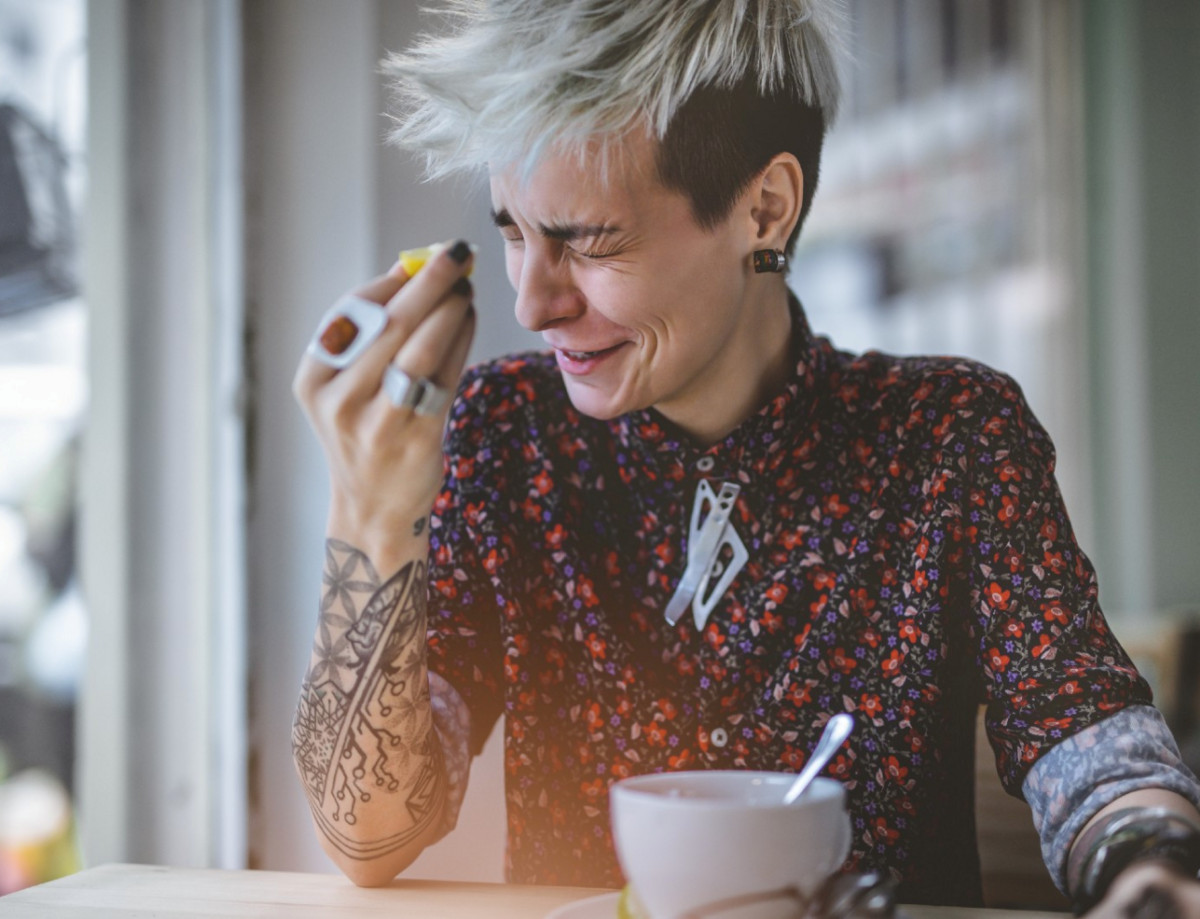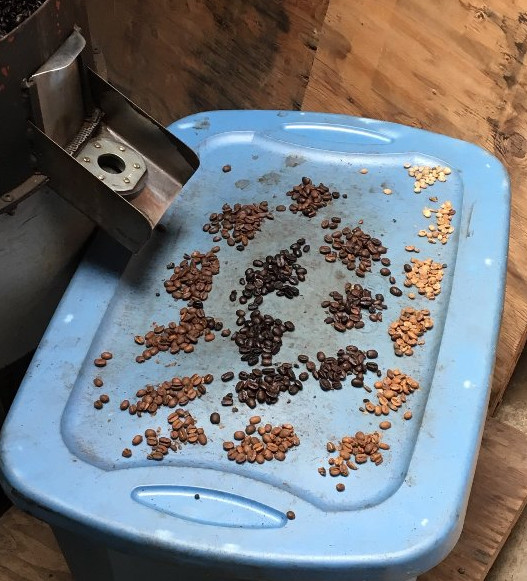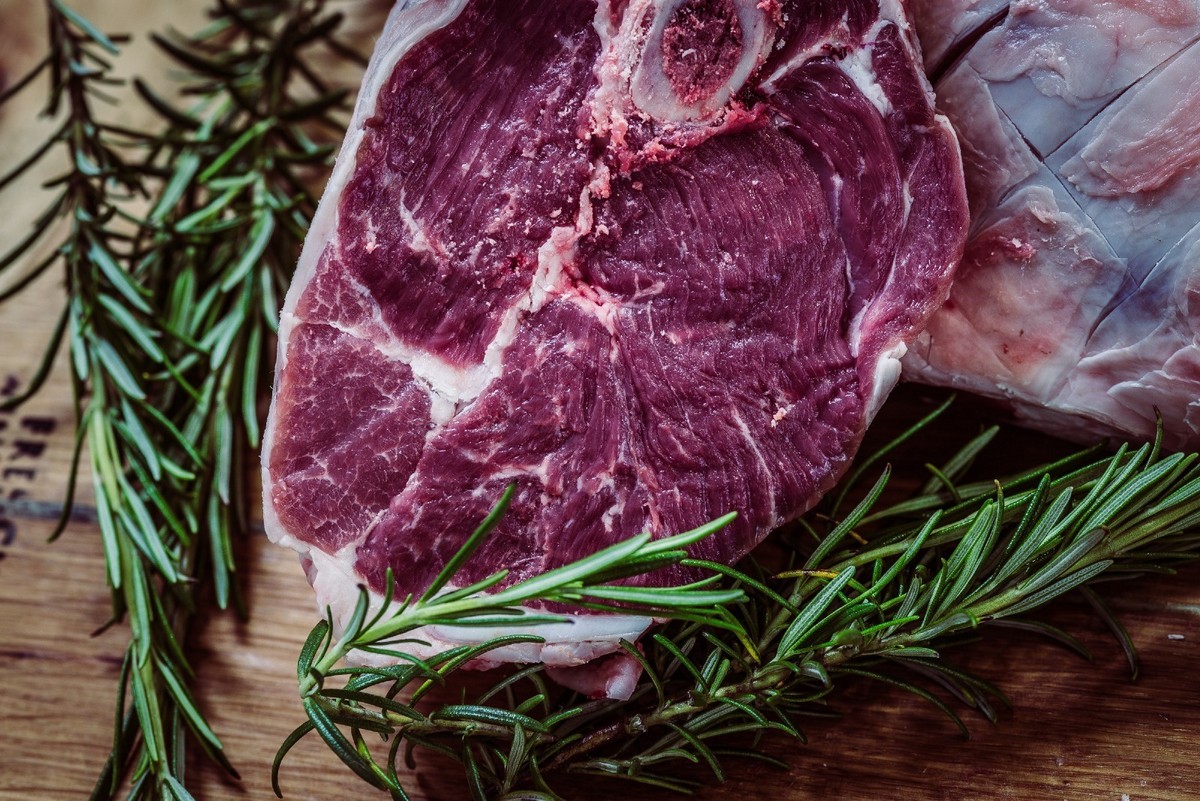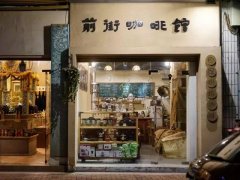Why does Starbucks deliberately bake coffee beans so scorched and bitter? Popular science of roasting coffee beans
Professional coffee knowledge exchange more coffee bean information please follow the coffee workshop (Wechat official account cafe_style)
Coffee can be found everywhere in modern society, especially in various chain stores and chain stores on the street. But the coffee served in most stores is mostly heavily roasted coffee. Why?

Photo: FluxFactory/E+/Getty Images
It was not until I was 29 years old that I drank real coffee for the first time when I lived in Costa Rica for a year. As a middle school teacher in the city center, I spent the first six years of my career as a loyal fan of the unhealthy Diet Coke. I hardly knew that my first cup of coffee at El Toledo Coffee Farm would destroy me as soon as I returned to the United States.
After moving back to the Midwest, I tried Starbucks and our local coffee chain and noticed huge differences in taste. Of course, that might make me a coffee-loving snob. In spite of this, I have no resistance to every cup of coffee with a bitter and anxious taste.
The Secret of Coffee beans
It turns out that I suddenly hate Costa Rican drinks for a reason. You see, generally speaking, there are three different types of roasting of coffee: light roasting, moderate roasting and heavy roasting.
Heavy baking is undoubtedly the most common in the United States. For many of us, all the coffee we drank in the past may have been heavily roasted. We associate deep roasting with "espresso" that contains a lot of caffeine. In fact, lightly roasted coffee contains more caffeine-but this is another topic of coffee roasting.
When we bake coffee at El Toledo, visitors will see how coffee beans change in just a few minutes of cooking and what those minutes mean to the taste of coffee. As shown in the figure below, each group of coffee beans is taken out every 1 minute during the 15 minutes of baking, and the effect is as follows.

These are the beans I baked during my visit to El Toledo Photo: Brian Stoffel
It can be seen that different baking times have had a very different impact on the appearance of coffee, not to mention the internal mechanism that we cannot see with the naked eye. As the saying goes, "there is a big difference". This is especially evident in coffee beans with different baking times and methods.
For baking, you need to know these things:
In light baking, the fruity and sour taste are more obvious, mainly because the taste of the raw materials is preserved.
In medium roasting, coffee tastes more balanced and sweeter. This is mainly because glucose has been heated and activated, but it has not yet been burned.
In heavy baking, the main taste is bitterness. When something is burned, the bitter taste is inevitable.
Cheap, heavily roasted coffee
In the case of light roasting, the taste of high-quality and low-quality coffee beans is very different. High-quality coffee beans grow at high elevations, different ecosystems and shady environments, which make coffee beans mature slowly, so they are more flavorful.
Low-quality coffee beans, which usually come from low-lying farms, have little shade or diversity and mature so quickly that they have little chance to develop a taste. The result is a big discount on the taste.
However, due to the time and diversity required for planting (space for other plants), the yield of high-quality coffee beans is lower, while low-quality coffee beans can be mass-produced.
With the extension of the roasting time of coffee beans, the difference between high quality and low quality disappears.
Think of it this way: you and a friend go to a steakhouse for dinner. You ordered filet mignon, while your friend ordered calf meat. Obviously, if you both choose to cook lightly, the taste will be very different.

Coffee and steak, who would have thought they would be so the same Photo: Jez Timms/Unsplash
However, if you both choose deep baking, they will taste more or less the same. After all, roasted meat tastes the same-regardless of the quality of the raw materials.
It's the same with coffee.
It would be stupid for a large chain to buy high-quality coffee beans and use them to produce heavily roasted coffee. So they can spend less money on low-quality coffee beans, anyway, the taste is not much different from the heavy roasting, and the profit margin will be greatly increased.
The reason is more than that.
I'm not a Starbucks punk. Although I don't like its coffee, I think as a multinational company, its challenges come from all aspects. At the same time, I think it's good for the company to encourage suppliers to adopt sustainable practices, and it provides unconventional services to its employees.
Another less insidious reason is that bitter coffee is popular with all major chains because heavy roasting is the only way to ensure taste consistency.

Photo: Charles Koh/Unsplash
As my friend Morgan Housel said:
If you want to gain a foothold in this world, you need to build a strong brand. But the brand must be won through constant repetition, to convince people that yesterday's experience is tomorrow's expectation. It's difficult, and it takes a long time. But once successful, it will be extremely powerful.
If you realize how important a brand is, you will find that a strong brand can be built on second-class products.
In essence, this is the whole story. If we buy a lightly roasted coffee from El Toledo and compare it to another lightly roasted coffee on a farm a mile away, it may taste very different. Different elevations, farming methods, ecosystems and even weather patterns can have a huge impact on the taste of coffee beans. In the dark oven, it's no big deal-because it roasts off all the flavors simply and rudely. In the case of light baking, the smell is all the gimmicks and selling points.
No multinational coffee company will make a lot of money from lightly roasted coffee. I think even the lightly roasted coffee offered by Starbucks and other companies is of very poor quality.
The next time you drink a lightly roasted cup of coffee in Costa Rica-or any other coffee producing country-you will be shocked by its delicacy.
This article is translated from medium.com

END
Important Notice :
前街咖啡 FrontStreet Coffee has moved to new addredd:
FrontStreet Coffee Address: 315,Donghua East Road,GuangZhou
Tel:020 38364473
- Prev

Guangzhou boutique coffee map | Restaurant Guide, a niche boutique cafe worth clocking in in Guangzhou.
Professional coffee knowledge exchange more coffee bean information Please follow Coffee Workshop (Wechat official account cafe_style) like the industrial revolution, the coffee industry has experienced several waves, from instant coffee to fancy coffee, and the third wave that is becoming popular is boutique coffee. The degree of understanding of boutique coffee has become one of the important factors of personal pressure. What i
- Next

520000 "coffee franchises" open in one day! How did "pinduoduo" in the coffee industry come into being?
Professional coffee knowledge exchange more coffee bean information please follow the coffee workshop (Wechat official account cafe_style) 11 days to achieve 520000 coffee stores, shocked the industry, it is said that coffee lovers have their own coffee shop dream! But the dream is very full, the reality is very bony! If you want to open a coffee shop, you have to consider many factors: store cost, labor cost, fixed capital
Related
- What documents do you need to go through to open a coffee shop? coffee shop coffee shop certificate processing process
- How to purchase Coffee beans in small Cafe how to choose a suitable supplier for domestic Coffee supply Company
- How to drink Starbucks Fragrance White Coffee? how to make Australian White Coffee? what Italian coffee beans are recommended?
- The Story of Flora Coffee: the name of Flora Coffee Bean and the implication of the Flowers on Florna Coffee
- How much does a cup of coffee cost? How much is the profit of a cup of coffee? What is the profit of the coffee shop in a year?
- Yunnan small Coffee, known as "fragrant Coffee", introduces the characteristics of Alpine Arabica Coffee producing areas in Yunnan, China
- 2023 latest Starbucks full menu price list how much is a cup of Starbucks coffee what is better to drink the most popular hot and cold drinks recommended
- Starbucks different kinds of Coffee Price list Starbucks menu 2023 Top Ten Best drinks in Starbucks
- Starbucks Spring praise Comprehensive matching Coffee Bean theme Story Packaging implication and taste description
- The cost of a cup of coffee latte American coffee cost price and selling price

